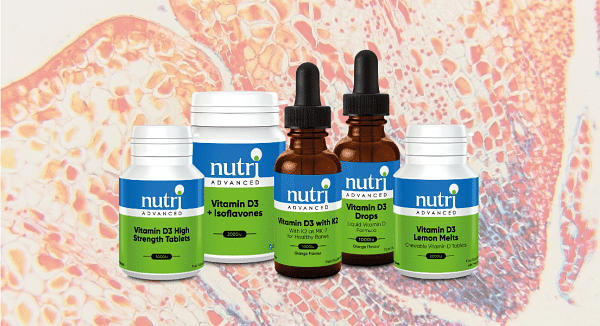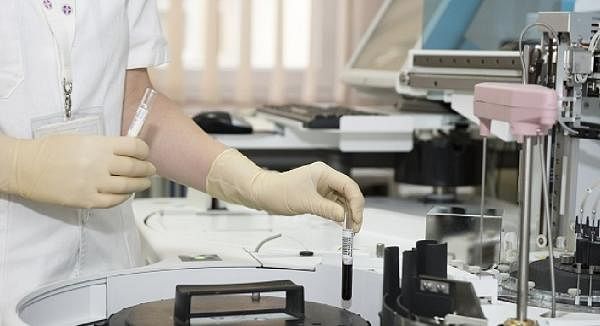A Simple Guide to Safe Sun Exposure
Why you can trust Nutri Advanced Every article on our site is researched thoroughly by our team of highly qualified nutritionists. Find out more about our editorial process.
There’s been much talk in recent years about growing levels of vitamin D deficiency in the UK population. A recent survey in the UK showed that more than 50% of the adult population have insufficient levels of vitamin D and that 16% have severe deficiency. What many people don’t realise is that very few foods naturally contain vitamin D so the solution is not as simple as just getting more of this essential nutrient in our diets. Fortified milk, egg yolks and oily fish are the best sources, but we certainly cannot rely on food to provide us with optimal amounts of vitamin D on a daily basis. In fact, the major source (80 – 100%) of vitamin D is actually sunshine! Vitamin D is primarily manufactured in the skin on contact with sunshine.
Modern lifestyles are causing vitamin D deficiency
A modern day lack of bare skin exposure to sunlight is a major cause of vitamin D deficiency. Millions of years ago, our ancestors lived naked in the sun, spending most of the day working and travelling outside. Over the years, we have put on clothes and started working inside, travelling in cars and living in cities where buildings block the sun. In addition to this, in more recent years, skin cancer scares have further minimised sun exposure for all ages, especially for children. The recommended liberal use of high factor sunscreen has had additional negative impacts on the skin’s natural vitamin D production process. Before the sun scare, 90% of human vitamin D stores came from skin production not dietary sources. When you look at how our lifestyles have evolved to cut out the sun’s contact with our skin, it is easy to see why we now have such epidemic proportions of vitamin D deficiency.
Know how to safely increase vitamin D in the sun
In addition to supplementation, it’s a good idea to consider upping your bare skin exposure to sunlight to optimise your vitamin D levels. This is easier said than done however, as concerns over skin cancer have left people feeling worried about leaving the house without a full covering of SPF 40. With the recent data from Cancer Research UK (CRUK) showing a dramatic rise in the incidence of skin cancer over the last decade in the UK, it’s important to consider supplementing safely with vitamin D without excess exposure to the sun.
In response to these concerns, we’ve put together a simple guide to safe sun exposure so you can maximise your own body’s production of vitamin D whilst keeping safe in the sun.
Simple guide to safe sun exposure:
• How much sun? – Between 10 and 15 minutes in the UK summer sun without sunscreen is considered to be a safe balance between adequate vitamin D levels and any risk of skin cancer. The time required to increase vitamin D is typically short and less than the time needed to redden or burn.
• What time of day? – Midday in the summer is best, or as close to this time as possible. This is down to the angle of the sun and a higher chance that the vitamin-D producing UVB rays can get through. Your shadow gives a good clue as to whether you are producing vitamin D. If it’s longer than you are tall (as happens in winter for most of the day) it’s unlikely you are making any vitamin D. However, in summer, when your shadow is shorter, especially around midday, you are more likely to produce vitamin D.
• How much bare skin? – Large areas exposed to the sun’s rays, such as the back, will produce more vitamin D. Completely naked is best but not very practical! The more skin that is exposed, the greater the chance of producing vitamin D before burning.
• How often? – At least several times a week is recommended.
Enjoying the sun safely, while taking care not to burn, can provide the benefits of vitamin D without unduly raising the risk of skin cancer.
This website and its content is copyright of Nutri Advanced ©. All rights reserved. See our terms & conditions for more detail.
Nutri Advanced has a thorough research process and for any references included, each source is scrutinised beforehand. We aim to use the highest value source where possible, referencing peer-reviewed journals and official guidelines in the first instance before alternatives. You can learn more about how we ensure our content is accurate at time of publication on our editorial policy.
Most Popular Articles
-
7 Surprising Ways To Support Your Magnesium
If you are displaying signs of a magnesium deficiency, here are 7 ways to boost your magnesium levels that are easy to incorporate into your daily life. -
5 Best Vitamin C Supplements Picked By Our Experts
Learn more about the different types of vitamin C, the different benefits you get from different types, and what you get for spending more on a good supplement. -
Top 5 Vitamins For Energy And Tiredness Picked By Our Experts
The 5 best and most important vitamins for energy & tiredness including B vitamin food sources & best supplement forms for energy. -
Benefits of Myo-Inositol for Polycystic Ovary Syndrome (PCOS)
In this research review article, we take a closer look at a lesser-known natural compound called myo-inositol that has been found to have significant potential to improve many of the prevalent features of PCOS. -
Top 10 Reasons to Give Your Kids Omega-3
Read the top 10 reasons that kids should have plenty of Omega-3- an essential fatty acid- including for depression, brain function, sleep & reading/maths skills.











